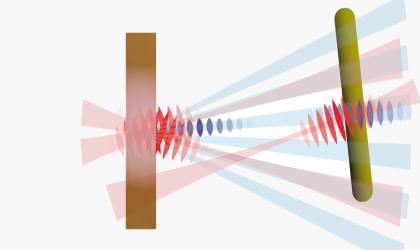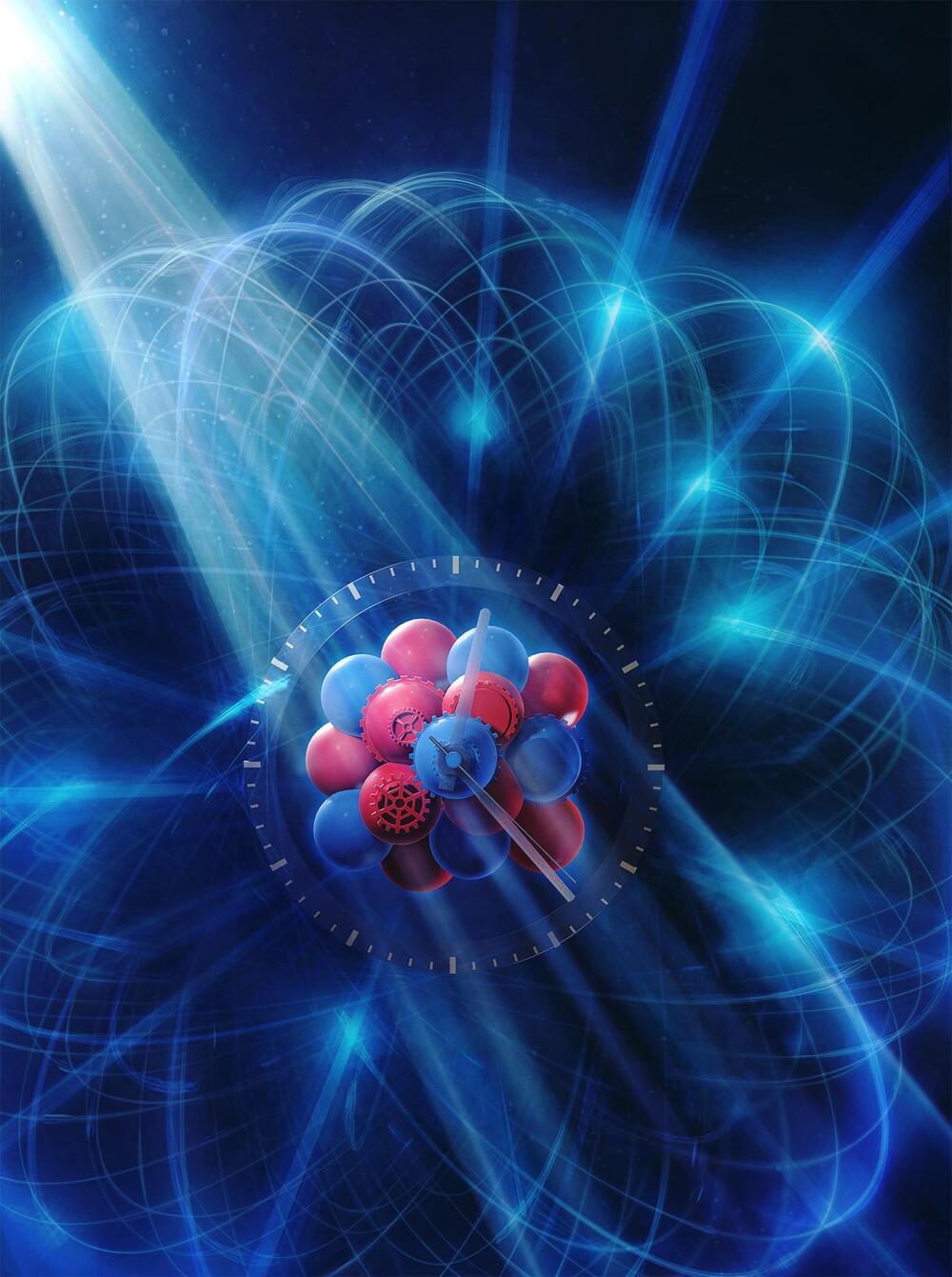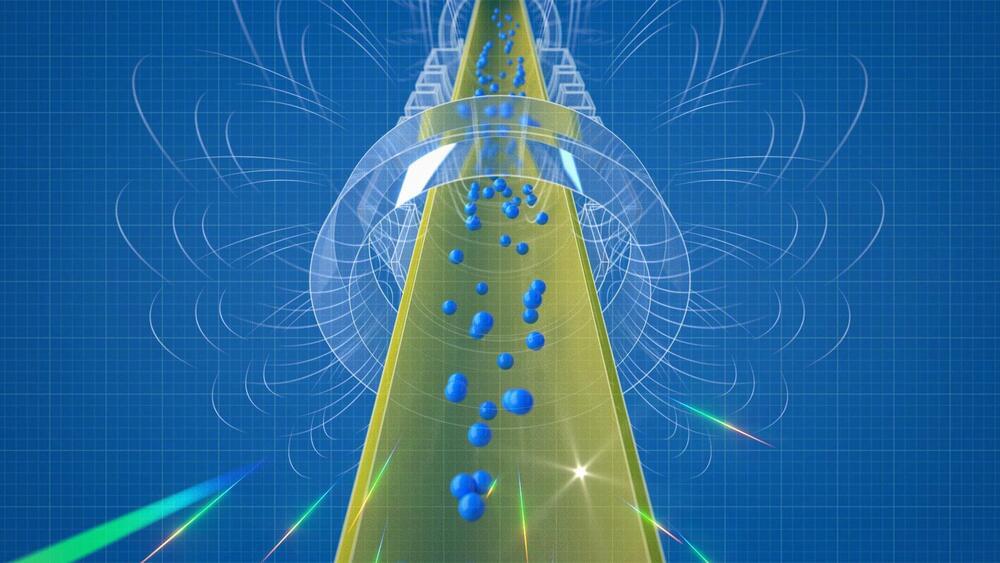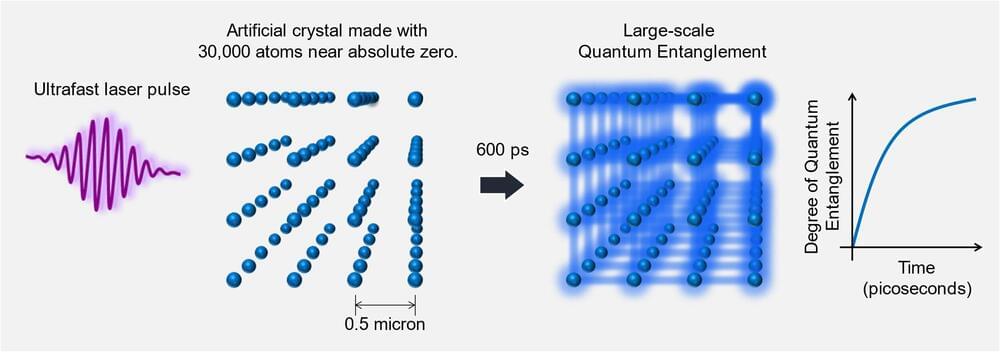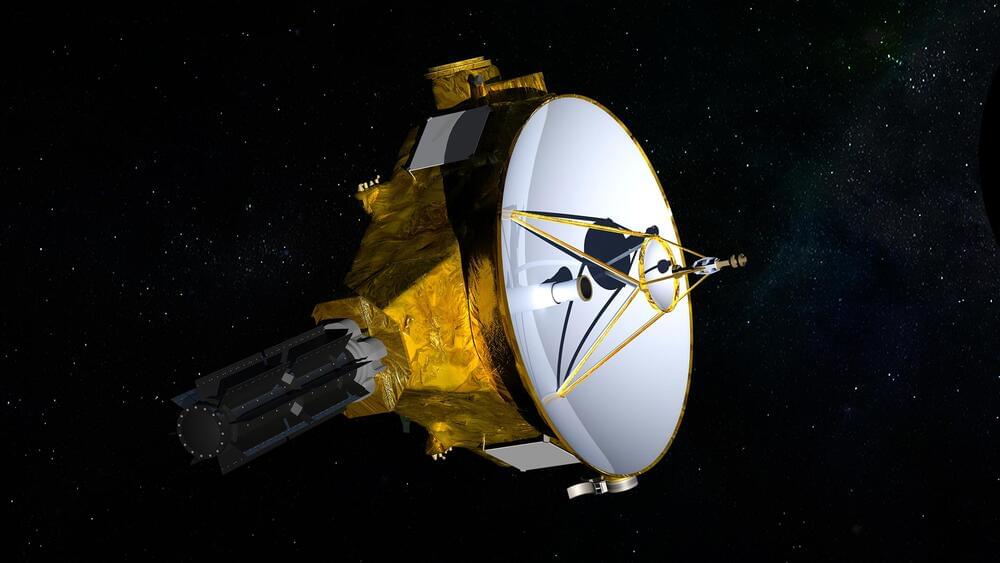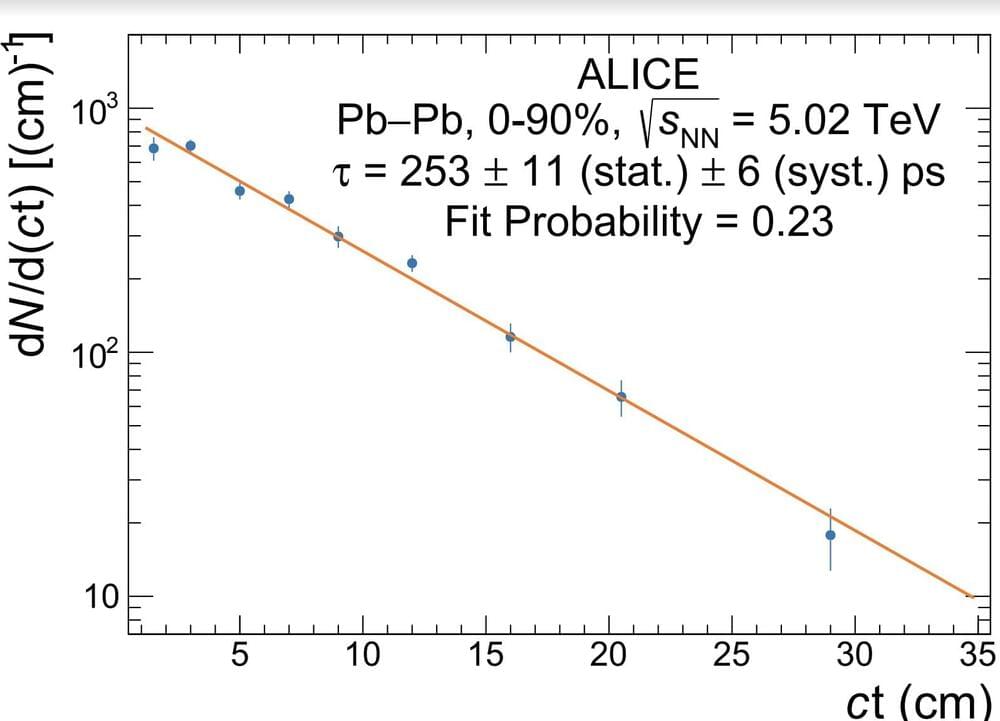
A hypertriton is a tritium nucleus in which a neutron is replaced by a so-called Lambda hyperon. This type of hypernucleus was first discovered in the 1950s has since been the key focus of numerous studies.
The ALICE collaboration, a large research group that studies the collisions of nuclei inside CERN’s large hadron collider (LHC) in Switzerland, recently measured the lifetime of a hypertriton with remarkable precision. Their paper, published in Physical Review Letters, is a further step forward toward understanding the unique properties of these fascinating nuclear complexes.
“As the first and lightest hypernucleus (i.e., a nucleus that includes a baryon with at least one strange quark) ever identified, the hypertriton holds a special place in nuclear physics,” Maximiliano Puccio, part of the ALICE collaboration, told Phys.org.
